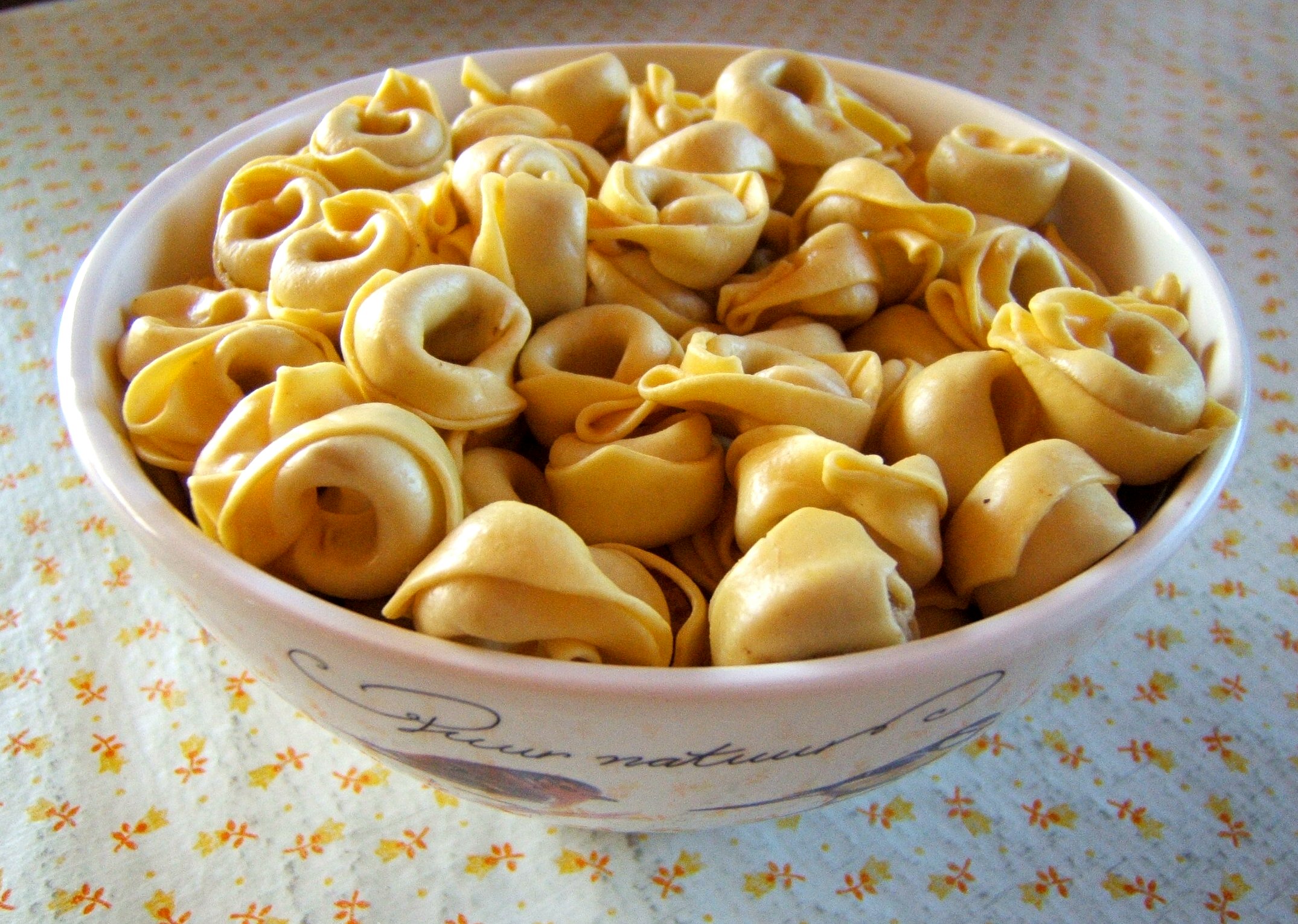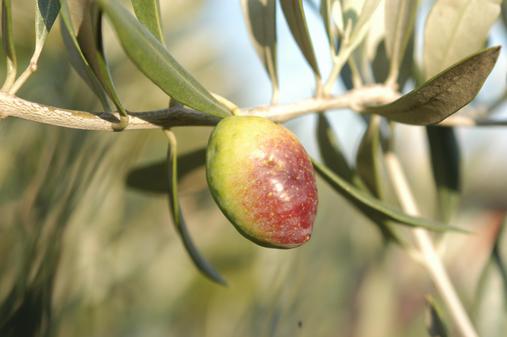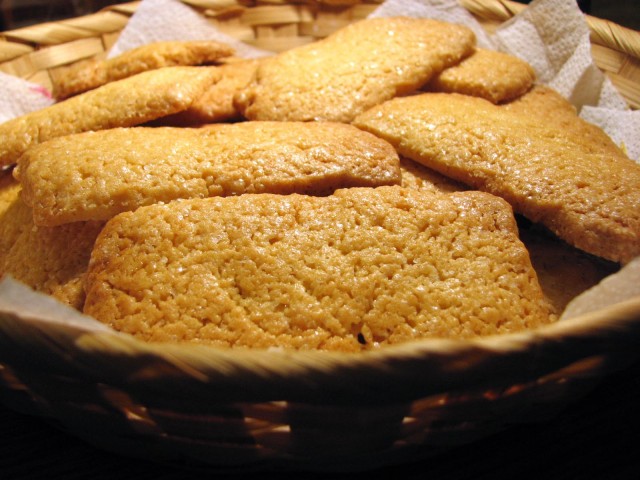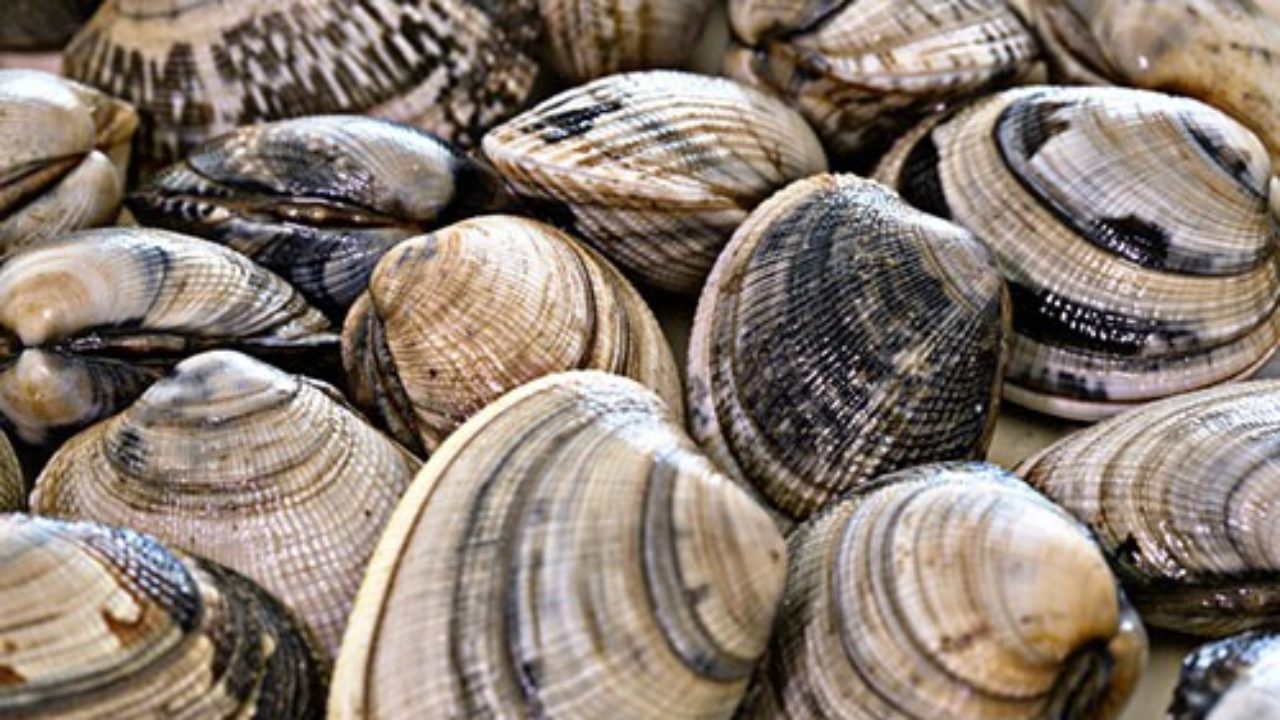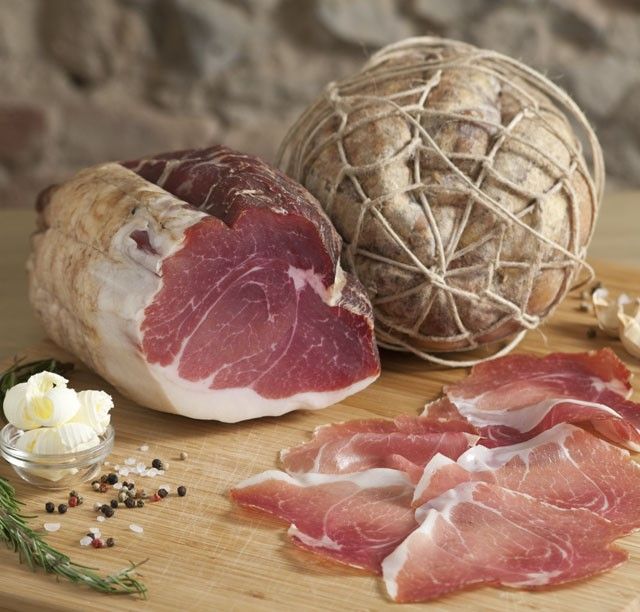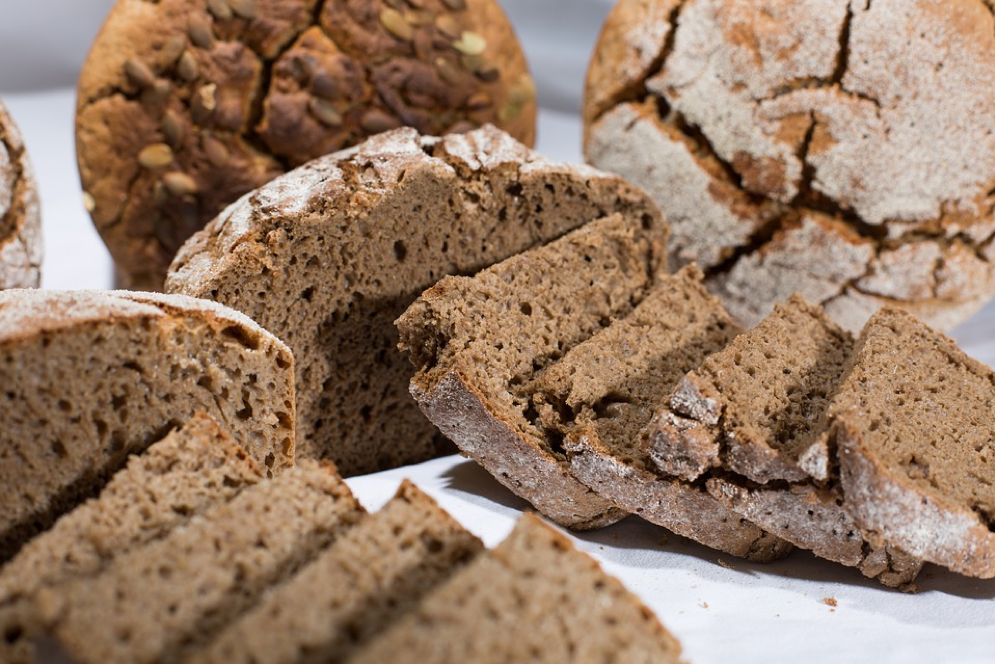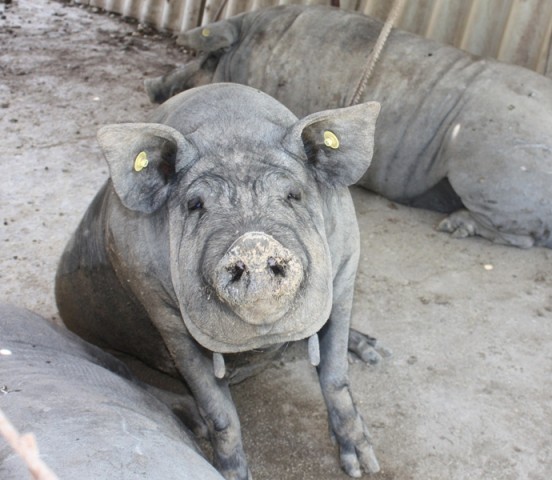The story goes that at an inn in Castelfranco dell’Emilia, then under Bologna, a beautiful Marchesina arrived. The cook of the inn, attracted by such beauty, spied the woman through the keyhole and was struck by her navel. When the time came to prepare dinner, the skilled chef formed, with puff pastry and meat filling, a new delicacy, inspired by that very noble navel.
Others want a divine origin, substituting for the figure of the Marchesina, the Goddess Venus.
Since the postwar period, the custom of seasoning tortellini with cream has spread, sparking the fury of traditionalists: the real tortellino is the one served in broth.
Walking through the streets of the city, you will notice that every self-respecting bread and pasta store sells its "grandmother’s tortellini," prepared strictly by hand by skilled Bolognese housewives, according to their own family tradition; however, the real recipe was filed on December 7, 1974, by the "Dotta Confraternita del Tortellino" with the Bologna Chamber of Commerce.
Tortellini in broth were known as early as 1550, when the "torteleti soup" was mentioned in the Diary of the Senate of the City of Bologna, as part of the menu of the celebrations for the installation of the new tribunes.
The filling calls for: pork loin (marinated for 2 days with garlic, rosemary, salt and pepper) to be cooked in a saucepan over low heat with a knob of butter, prosciutto crudo, mortadella di Bologna, parmesan cheese, 1 egg, nutmeg (all to be finely minced with the batter).
Slightly different that of the Modenese tortellino: pork loin (to be cut into cubes and sautéed in a nonstick pan for a few minutes), Modena ham, mortadella, extra-mature parmesan, 1 or 2 eggs, grated nutmeg, white pepper and salt (all to be minced finely with a meat grinder).
The puff pastry is prepared with wheat flour ("00") and very fresh chicken eggs; all must be worked by hand for at least 15 minutes and then the dough must rest for an hour wrapped in a tea towel. The sheet of dough should be rolled out with a rolling pin until it reaches a uniform thickness of less than 1 mm; squares of about 4 cm are cut out (Pellegrino Artusi, a late 19th-century gastronome, fixed the diameter of the disc of dough at 37 mm) on each of them a hazelnut of filling is placed, folded into a triangle and shaped around the finger (index finger, the Modenese – little finger, the Bolognese).
The broth in which to cook the tortellini (be careful not to call them cappelletti, which instead are larger, with thicker pastry and more filling) also differs from city to city: in Modena the broth is chicken, prepared in the morning for the evening. In Bologna it is made of capon and beef, and the bone must not be missing.
